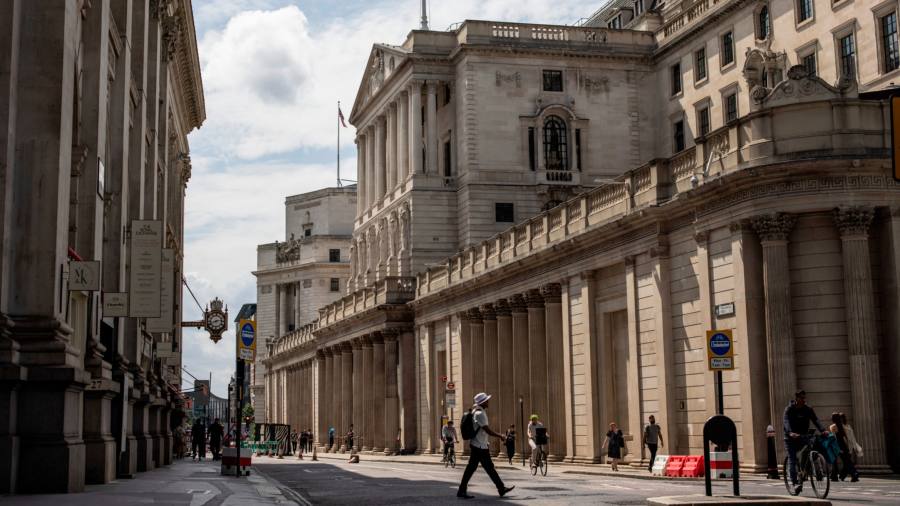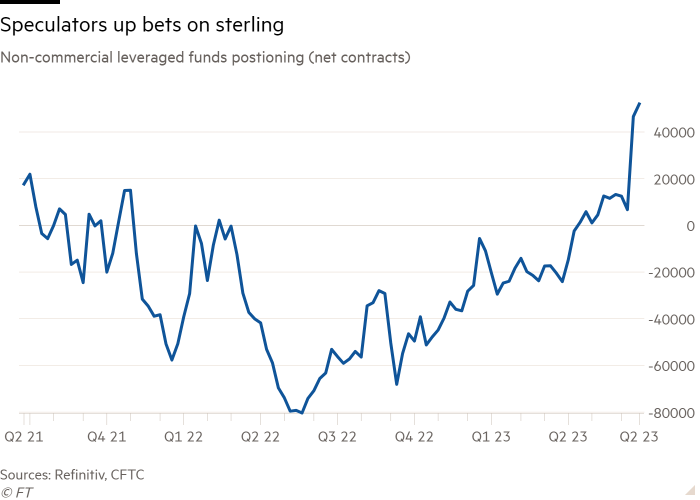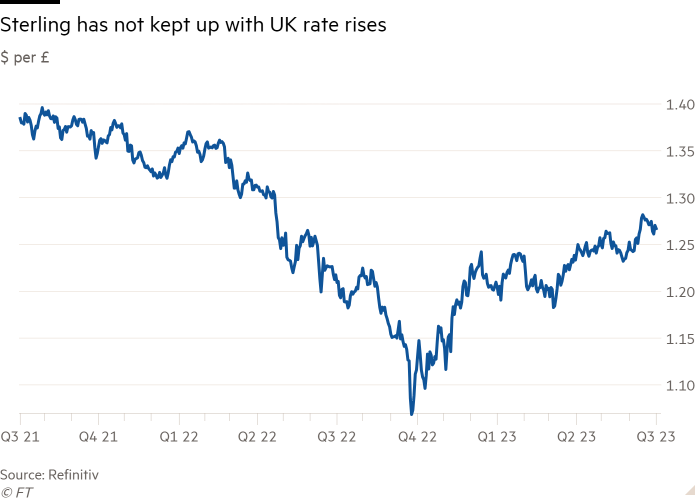
Receive free Pound Sterling updates
We’ll send you a myFT Daily Digest email rounding up the latest Pound Sterling news every morning.
Currency speculators have boosted bullish wagers on the pound to the highest level for nine years despite recent signs that sterling’s strong rally this year is flagging.
The growing consensus among speculative investors, such as hedge funds, comes after sterling has already rallied strongly this year, driven by the Bank of England’s effort to lift borrowing costs to quell inflation. The pound traded at $1.2665, a 4.8 per cent rise against the dollar since the start of January.
With rising prices proving particularly stubborn in the UK relative to other economies, markets now think the BoE will have to go further just as other big central banks are nearing the end of their tightening cycles.
Leveraged non-commercial funds upped their net long positions on sterling to almost 52,000 contracts for the week ended Tuesday June 27, the highest level since July 2014, according to data from the US Commodity Futures Trading Commission. The figures are a closely watched gauge of currency speculators’ activity in futures markets.
“The positioning shows that speculators have become more bullish on sterling,” said Simon Harvey, head of FX analysis at Monex Europe. “It’s a bet that the Bank of England will get pulled by its hair to take rates higher.”

A rise in bets on sterling follows a bumpy ride for the UK currency in recent weeks. The pound has fallen by nearly 1 per cent since the BoE unexpectedly raised interest rates to 5 per cent on June 21, upending the typical correlation between higher rates and stronger currencies.
Investors said recent weakness was the market signalling that aggressive rate rises would kill off growth and induce a recession, deterring foreign capital.
“Currencies where central banks are keeping rates high because growth is strong, rather than because inflation is high, are likely to be favoured,” said Paul Robson, a currency strategist at NatWest. “The fact that the BoE is tightening because inflation has been persistently high” is a negative for the pound, he added.
Some analysts argue that a crowded bet on stronger sterling can be a recipe for a pullback, given that many investors might ditch their positions if the market moves against them.
“In theory we should see a bigger drop because there are more positions that could be scaled back,” said Francesco Pesole, a currency strategist at ING. “We think sterling is quite vulnerable.”
But others argue that higher UK interest rates should continue to support the currency.

“We still encounter a lot of scepticism that sterling can rally with [bond yields] back where they were last autumn,” said Kamakshya Trivedi, head of global foreign exchange, interest rates and emerging markets strategy research at Goldman Sachs, referring to the period after September’s mini-Budget when the pound tumbled despite rocketing interest rate expectations. “But things could not be more different now.”
Trivedi said that with energy prices declining and the labour market still strong, real incomes are improving, and the BoE no longer stands out as a “reluctant hiker”. He added: “We remain confident that the pound should strengthen as real rates move higher.”
Markets have had a big rethink about the outlook for UK interest rates this year. Swaps markets are pricing in multiple further rate rises to a peak of around 6.25 per cent early next year.
While traders also expect more rate increases in Europe and the US, the moves are less stark, with markets pricing in a likely two more 0.25 percentage point increases by the European Central Bank this year, and one more by the Fed in July.

